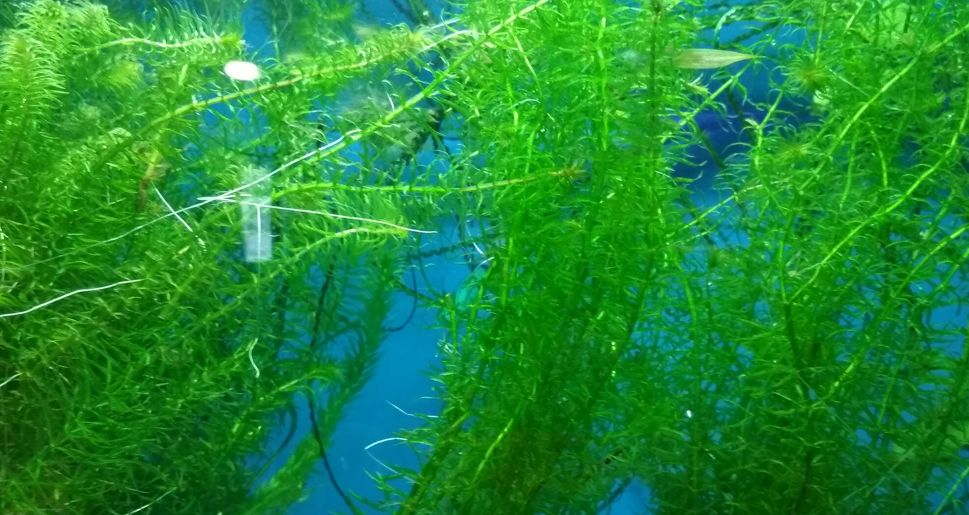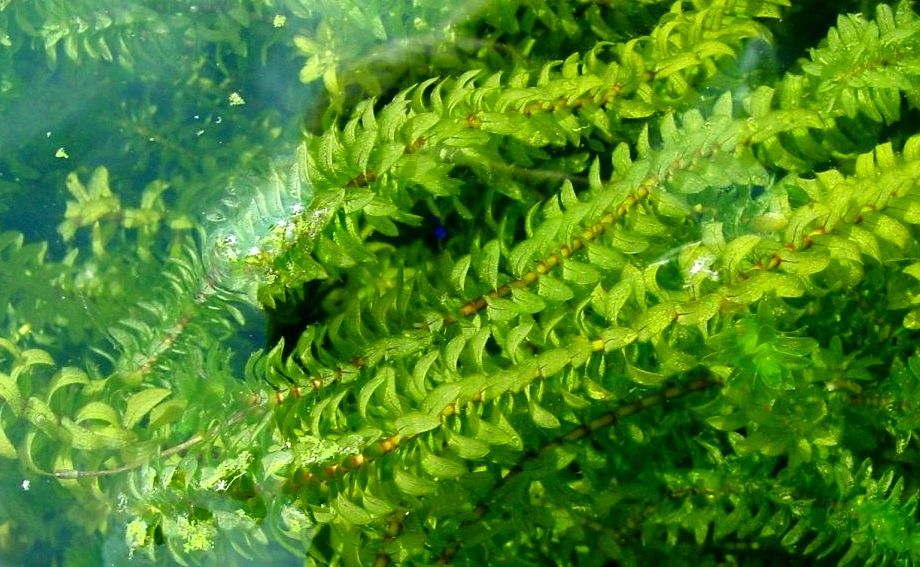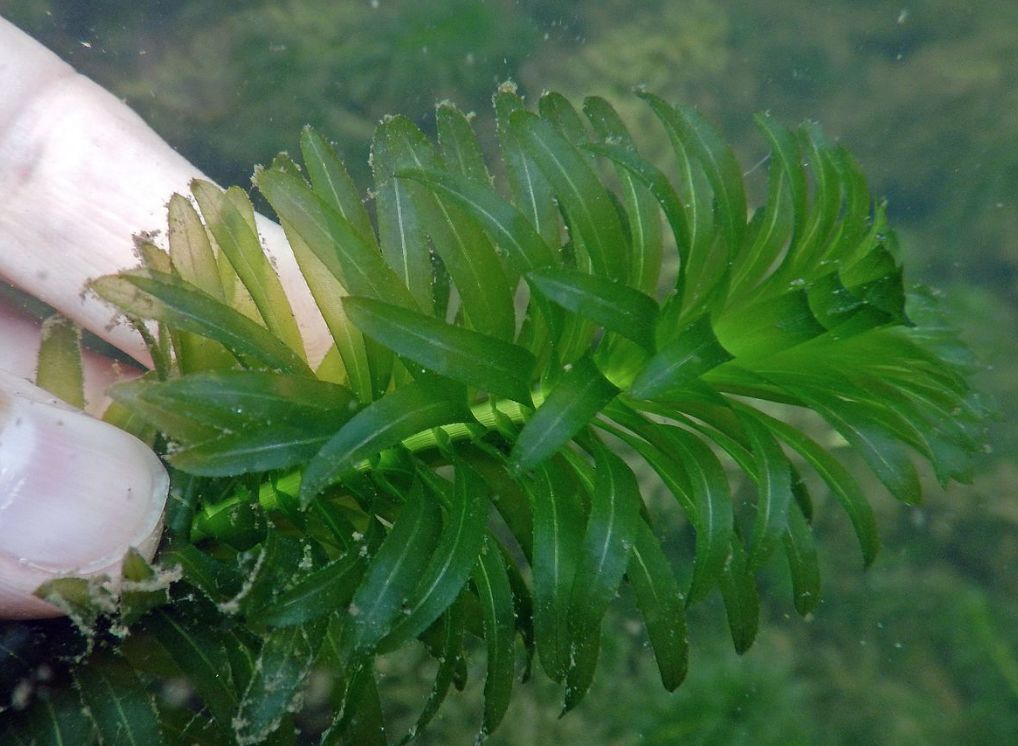Brazilian waterweed, commonly known as egeria densa (also referred to as elodea densa), is one of the oldest and most popular aquarium plants. While “anacharis” is an outdated term, it is still used in the USA and Canada. This plant is particularly well-suited for beginner aquarists due to its rapid growth rate, which plays a crucial role in establishing a healthy biological balance in new tanks. By quickly consuming nutrients and providing oxygen, egeria densa not only enhances water quality but also creates a vibrant environment for fish and other aquatic inhabitants.

Contents
Plant Habitat in the wild
Egeria densa, commonly known as brazilian waterweed, is native to freshwater basins in Argentina, Brazil, and Uruguay. This resilient plant has since spread widely across Eurasia, North America, and Oceania, thriving in a variety of freshwater habitats, including rivers, lakes, streams, and ponds. In its natural environment, egeria densa often forms dense stands, creating lush underwater forests that provide essential oxygen, shelter, and food for numerous aquatic organisms. This dense growth also helps reduce nutrient levels, effectively controlling algae blooms and enhancing overall water quality.
However, egeria densa’s rapid growth can lead to significant ecological challenges. When introduced to new environments, it can become invasive, outcompeting native aquatic plants and disrupting local ecosystems. Its ability to quickly form thick mats can shade out indigenous vegetation, diminishing biodiversity and altering water flow dynamics, which in turn degrades habitat quality for native fish and other aquatic life.
Introduced to various regions, including North America, Europe, and Asia, egeria densa is valued in aquariums and water gardens for its aesthetic appeal and water-purifying properties. Unfortunately, excess plant material often escapes into open waters, where it can quickly establish itself, leading to issues such as the disruption of hydroelectric power stations in Brazil.
For aquarium hobbyists and water garden enthusiasts, it is crucial to be aware of the potential invasiveness of egeria densa. Proper disposal of any excess or unwanted plant material is essential to prevent accidental introduction into natural water bodies and to protect local ecosystems.
Description
Egeria densa is a plurannual, dioecious aquatic plant renowned for its adaptability and aesthetic appeal in aquariums. Under favorable conditions, it can produce a long stem that reaches over 3 meters in length. This upright, rooted stem typically grows to 5 meters and measures 1 to 3 mm in thickness. Its cylindrical structure can be straight or branched, featuring very short internodes.
The leaves of egeria densa are arranged in whorls, with 4 to 8 leaves per verticil. The lower leaves are often opposite, typically numbering three in a verticil. Each leaf is linear, with serrulate edges, measuring 1 to 4 cm in length and 2 to 5 mm in width.
Each internode features four short, lanceolate leaves. While the spacing between verticils remains consistent along the stem, it decreases toward the tip, where a ‘hat’ of leaves forms.
At first glance, the leaf lamina appears smooth with flat edges. However, upon closer inspection, you’ll notice that the edges are actually serrated, adding to the plant’s unique texture and visual appeal.
| Feature | Description |
|---|---|
| Common Names | Elodea densa, Brazilian waterweed, Anacharis |
| Family | Hydrocharitaceae |
| Native Range | South America, specifically the Amazon River basin |
| Invasive Status | Considered invasive in many regions outside of its native range |
| Growth Habit | Submerged aquatic plant |
| Growth Rate | Fast-growing, capable of reaching lengths up to 3 meters (9.8 feet) |
| Light Requirements | Moderate to high light, but can tolerate lower light levels |
| Water Temperature | Tolerates a wide range, typically between 15°C to 30°C (59°F to 86°F) |
| Reproduction | Primarily reproduces through fragmentation, where broken stems can root |
| Environmental Impact | Can outcompete native vegetation, reduce biodiversity, and alter habitats |
| Control Measures | Mechanical removal, herbicide treatments, biological control agents |
| Preferred Habitat | Freshwater habitats such as rivers, lakes, streams, and ponds |
| Ecosystem Benefits | Provides oxygen, shelter, and food for aquatic organisms |
| Aquarium Use | Popular choice for aquariums and water gardens due to aesthetic appeal |

Difficulties in keeping
Egeria densa is one of the most unpretentious and easy-care aquarium plants (like Vallisneria), making it an excellent choice for beginner aquarists. The primary requirement is to provide adequate lighting; without sufficient illumination, the lower leaves—those that receive less light—may begin to rot and fall off.
This plant’s simple cultivation process contributes to its popularity. Egeria densa can either float near the water’s surface or anchor itself to the substrate. It thrives in a wide range of conditions, adapting well to various temperature and water chemistry parameters. However, it’s important to note that higher water temperatures can slow its growth rate.
Known for its ability to absorb organic nutrients from the water, egeria densa grows vigorously, which helps suppress the growth of algae. This nutrient uptake, combined with its efficient oxygen production, makes it more effective than many other plants in maintaining water quality. Overall, egeria densa is a fantastic option for those new to aquarium keeping, providing both aesthetic appeal and functional benefits.

Care and keeping in a tank
In the 19th century, during the early days of aquarium hobbying, egeria densa (commonly known as Anacharis) gained immense popularity due to its hardiness and adaptability, especially in the absence of modern aquarium equipment that could maintain stable water parameters.
Today, you’ll often find this plant in the tanks of beginner aquarists. During the spring and summer months, when provided with bright light, Anacharis thrives even in home ponds without the need for rooting, CO2 supplementation, or fertilizers, often filling the entire volume of water.
By absorbing nitrates, Anacharis effectively cleans the water, helping to prevent unwanted algae growth. Its lush foliage makes it an excellent choice for tanks housing live-bearing fish, as the dense leaves provide shelter for juvenile fish.
It’s important to note that the moisture from Anacharis can be harmful to young fish, which is why trimming should be done with care in nursery tanks. For adult fish, however, the plant’s moisture poses no toxicity.
Additionally, this moisture can inhibit the growth of more delicate aquarium plants. Therefore, when trimming or removing Anacharis, it’s advisable to separate sensitive species from the tank to avoid any adverse effects. Overall, Anacharis remains a valuable addition to both beginner and established aquariums, combining practicality with aesthetic appeal.
Water parameters
Egeria densa thrives in a temperature range of approximately 15°C to 30°C (59°F to 86°F), demonstrating remarkable adaptability within this spectrum. The plant is tolerant of varying water hardness and pH levels, allowing it to grow in both very soft and hard water.
However, it is crucial to avoid abrupt changes in growing conditions, as sudden shifts can stress the plant and potentially lead to its decline. Maintaining stable environmental parameters is key to ensuring the health and vitality of egeria densa in any aquarium setting.
Lighting
The most crucial requirement for egeria densa (Anacharis) to thrive in your aquarium is adequate lighting. The lighting should be both bright and uniform to support optimal growth.
Egeria densa requires moderate to high lighting levels, as sufficient light is essential for photosynthesis and healthy plant development. Providing a full spectrum of light, including both red and blue wavelengths, will enhance growth and vigor. Consider using LED or fluorescent lights designed for plant growth to achieve the best results.
CO2
While egeria densa can thrive without additional CO2 supplementation, incorporating carbon dioxide into its environment can significantly enhance its growth. The injection of CO2 or the addition of liquid carbon sources can promote robust development and help prevent nutrient deficiencies.
By ensuring an adequate supply of CO2, you enable the plant to photosynthesize more efficiently, leading to healthier and more vibrant foliage. This not only benefits egeria densa but also contributes to a more balanced ecosystem in your aquarium.
Nutrients
Egeria densa can thrive without additional fertilization as long as there is a sufficient amount of organic material in the tank. This hardy plant is capable of utilizing the nutrients present in the water column effectively. However, supplementing with liquid fertilizers or root tabs can significantly enhance its growth and overall health.
Substrate
Brazilian waterweed (Egeria densa) is versatile and can thrive in a variety of substrates. While it can be rooted in the substrate, it is also well-known for its ability to grow as a free-floating plant.
Once placed in the substrate, egeria densa develops thin white roots that anchor it securely to the bottom. Alternatively, you can allow sprigs to float in the water; as they grow to the appropriate size, they will naturally develop roots on their own. This adaptability makes egeria densa an excellent choice for aquarists looking to enhance their tanks with minimal effort.

How to plant egeria densa
Prepare the aquarium: Start by filling the aquarium with water, ensuring it reaches the desired level and temperature for your aquatic setup. If you’re using a substrate, distribute it evenly across the bottom.
Prepare the plants: Trim the egeria densa stems to your desired length, typically cutting them into smaller sections of about 5-10 cm (2-4 inches). This encourages branching and denser growth.
Planting options:
Floating: Egeria densa can also be grown as a floating plant. Simply release the trimmed stems into the water, and they will naturally float. This method is ideal for low-tech setups or temporary situations.
Planting in substrate: If you choose to plant egeria densa in a substrate, use your fingers or planting tweezers to create small holes. Insert the trimmed stems into these holes, making sure the roots are covered and the stems are secure. Space the plants according to your desired density, keeping their growth potential in mind.
Propagation
Egeria densa (Anacharis) propagates quickly and easily, making it an excellent choice for aquarists looking to expand their plants. The most effective methods for propagation are stem cutting and natural fragmentation.
Stem Cutting: This is the most common and straightforward method. Trim healthy stems of egeria densa to your desired length, typically between 5-10 cm (2-4 inches). Ensure that each cutting has a few leaves and nodes. Remove the lower leaves, leaving just a few at the top. Plant the stem cuttings in the substrate, making sure to bury the nodes while keeping the leaves above the surface. Over time, the cuttings will develop roots and new shoots, establishing new plants.
Fragmentation: Egeria densa can also propagate naturally through fragmentation. As the plant grows, it may develop side shoots or branches that detach or break off. These fragments can be collected and either planted in the substrate or allowed to float in the water. They will develop roots and grow into new plants.